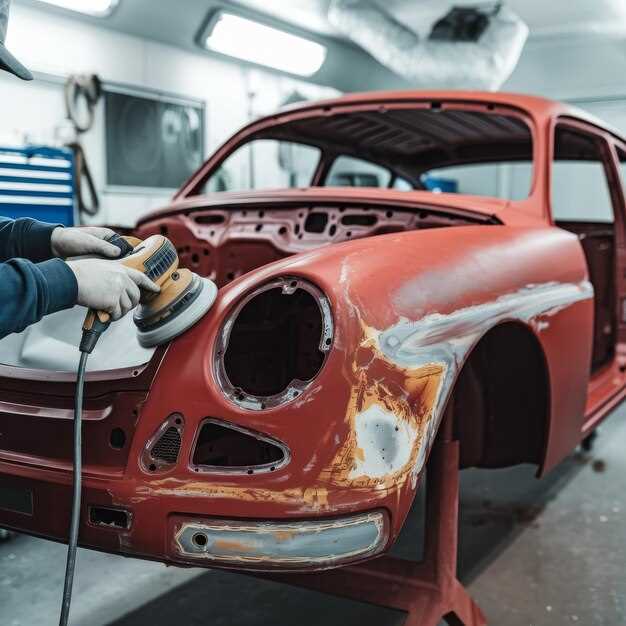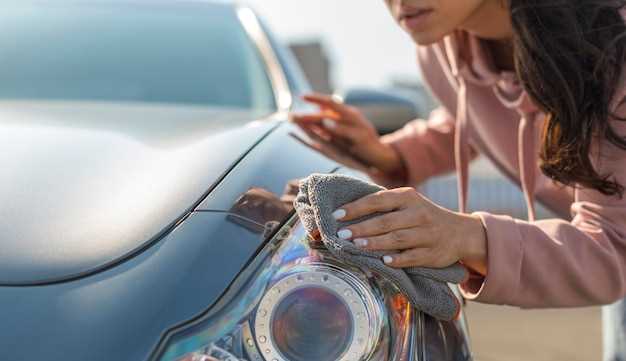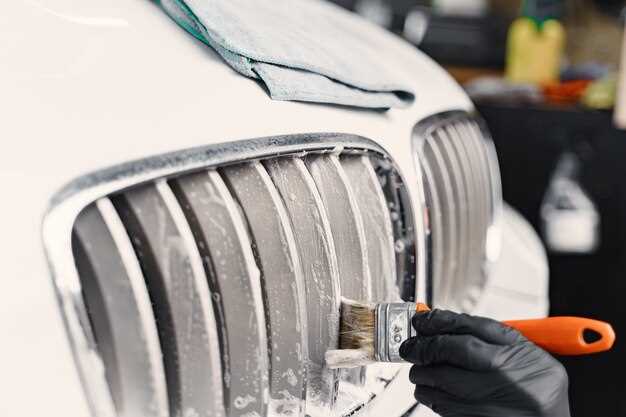How to Restore Faded Paint on Older Cars

Maintaining the allure of classic vehicles often hinges on the condition of their paint. Over time, fading occurs due to aging, exposure to environmental elements, and lack of care. This degradation not only diminishes the vehicle’s aesthetic appeal but can also impact its value. Fortunately, restoring the vibrant paint of a classic car is achievable with some straightforward techniques.
To begin the restoration process, it is essential to assess the current state of the vehicle’s paint. Analyzing the extent of fading will guide you in determining the best approach for rejuvenation. Whether the paint is simply dull or has developed oxidation, understanding these factors will enable you to choose the right products and methods to revive the coloration.
In this article, we will explore effective and simple tips for restoring faded paint on classic cars. From the proper cleaning techniques to the selection of polishing compounds, you’ll be equipped with the knowledge needed to bring your vehicle back to life. With a little effort and the right guidance, you can combat the effects of aging and keep your classic car looking spectacular for years to come.
Assessing the Condition of Your Classic Car’s Paint

To begin the restoration process of your classic car, it is essential to assess the condition of its paint. This evaluation will guide you in determining the necessary steps for effective restoration. Start by examining the surface for signs of fading, oxidation, and blemishes. Look for areas where the paint has lost its luster or appears chalky, which indicates oxidation damage.
Next, check for scratches, chips, or dents that may expose the underlying metal. These imperfections can lead to rust if not addressed promptly. Use your fingernail to see if your vehicle’s paint feels rough; a textured surface may suggest clear coat failure or contamination, requiring thorough cleaning before restoration.
Another critical aspect is to evaluate the overall uniformity of the paint color across different panels. Variations in shade may indicate prior repairs or paintwork that may not match the original finish. Make notes of any discrepancies and focus on these areas during restoration efforts.
Finally, assess the overall integrity of the paint by performing a water bead test. A well-maintained paint surface will repel water, forming beads, whereas a dull surface will allow water to spread. This simple test can help you understand whether your classic car’s paint needs immediate restoration attention or if minor touch-ups will suffice.
Choosing the Right Products for Paint Restoration

Selecting the appropriate products for restoring faded paint on classic cars is essential for achieving the best results. Factors such as aging and previous treatments can significantly influence your choices. Begin by evaluating the current condition of the paint. If it shows signs of significant degradation, you may need to consider deeper cleaning products or compounds that can effectively remove oxidation without damaging the underlying paint layer.
When choosing a restoration product, look for those specifically designed for automotive applications. These products are generally formulated to target automotive paint characteristics, ensuring compatibility. Use gentle polishes or compounds that contain mild abrasives for surface restoration while avoiding harsh chemicals that could further harm aging paint.
Additionally, quality waxes and sealants play a critical role in the restoration process. After cleaning and polishing, applying a good wax will help protect the paint from future fading and environmental damage. Waxes provide a barrier that enhances shine and durability, keeping your classic car looking its best for years to come.
Do thorough research and consider products recommended by professionals or classic car restoration enthusiasts. Reading reviews and seeking guidance can help identify products that deliver effective results specifically for aging car paint. Always perform a patch test in an inconspicuous area before applying any product to the entire surface to ensure compatibility and avoid unintended damage.
Step-by-Step Process for Reviving Dull Paint
Reviving the faded paint on your classic vehicle requires a careful, methodical approach. Follow these steps to restore the aging finish and bring back its shine.
Step 1: Wash the Surface – Begin by thoroughly washing the vehicle using a gentle car shampoo. This removes dirt, grime, and old wax that could interfere with the restoration process. Use a soft sponge and rinse well to ensure no residues are left behind.
Step 2: Dry Properly – After washing, dry the vehicle completely with a microfiber towel. This prevents water spots from forming, which could affect the paint restoration efforts.
Step 3: Assess the Paint Condition – Carefully examine the paint for any scratches, oxidation, or clear coat failure. This assessment will help determine the appropriate restoration methods needed for your vehicle.
Step 4: Use a Clay Bar – To remove embedded contaminants, employ a clay bar. This process smoothens the surface and prepares the aging paint for polishing. Follow the clay bar kit instructions for optimal results.
Step 5: Polish the Paint – Select a mild polish specifically designed for automotive finishes. Apply a small amount onto a polishing pad and work it into the paint using a dual-action polisher or by hand. This will help eliminate surface oxidation and enhance the color depth.
Step 6: Apply a Wax or Sealant – Once the paint is polished, apply a high-quality wax or sealant to protect the surface. This step not only adds shine but also offers a barrier against environmental elements that can lead to further fading.
Step 7: Regular Maintenance – To keep the paint looking vibrant, wash your vehicle regularly and reapply wax every few months. This will prolong the effects of your restoration efforts, preserving the classic appearance of your vehicle.
By following these steps, you can effectively revive dull paint and restore the beauty of your classic car, ensuring it continues to turn heads on the road.

